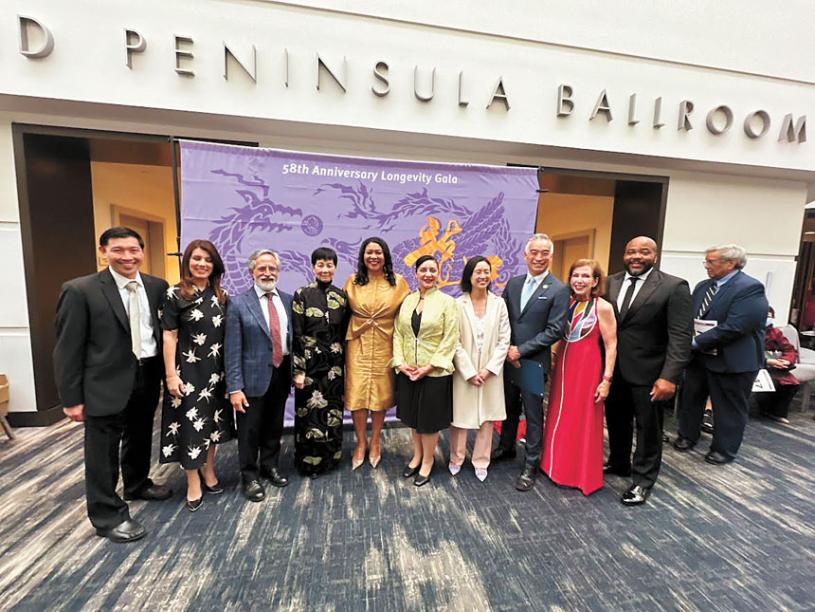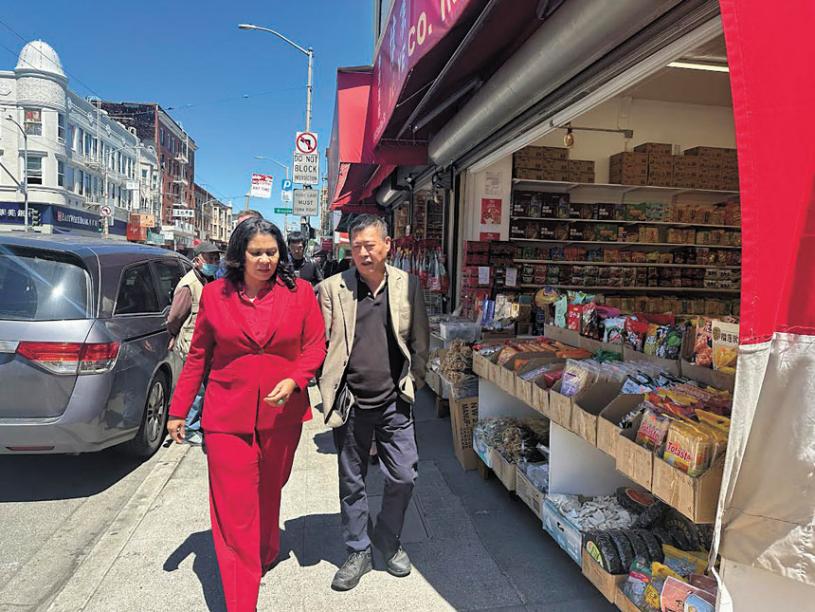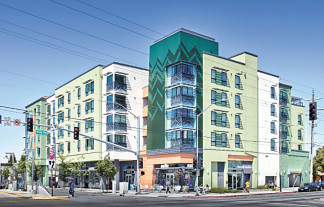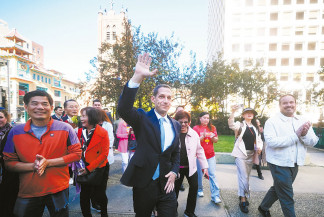







親愛的讀者們:
我們每天都在努力讓人們從街頭走進庇護所、住房和護理機構。這樣對於街上的人來說是更安全、更健康,也對我們所有希望擁有更乾淨、更安全的三藩市居民尤其更重要。
作為市政府兩年一度無家可歸人口普查的一部分,最新數據顯示,生活在三藩市街頭的人數已達到至少十年來的最低水平。這是因為三藩市擴大了獲得庇護和住房的途徑,並在庇護和服務被拒絕時加強了對本地法律的執行。
2024年1月進行的2024年時間點普查發現,生活在帳篷、建築物或街道上的人數少於3000人,比2022年時間點普查下降了13%,是2015年時間點普查之前的最低水平。這一下降與市內季度帳篷普查的最近下降趨勢一致。根據4月的帳篷普查,自2023年7月以來,帳篷數量減少了41%,是三藩市五年來的最低水平。
十年來最低街頭無家可歸人數
在2024年時間點普查發現有2912人在三藩市的街頭,包括帳篷、建築物或直接在街上睡覺。這比2022年的3347人減少了13%。這是自2015年發現有3791人在街頭睡覺以來的最低數字。
自我上任以來,我們一直優先處理讓人進入室內住房,通過擴大庇護和住房達到歷史新高數目,進行持續帳篷接觸工作,並推出如「從街頭到家」這樣創新的計劃,更快地安置人們到空置的住房中。我還成功與州立法機關合作,擴大了州府級心理健康法,允許三藩市強制更多不願或無法接受幫助的人進行治療和護理。
街頭帳篷的進展
三藩市的帳篷隊伍由健康街道外展中心協調進行外展工作,向人們提供庇護和服務,執行地方法律以防止人們拒絕服務時的紮營,並清理帳篷。
自2022年最後一次時間點普查以來,健康街道外展中心帳篷隊伍已經進行了900多次行動,直接從帳篷中搬走了2800多人。除此以外,這是在此期間亦有數千人士透過其他進入途徑獲得了庇護。
健康街道外展中心帳篷隊伍在2024年繼續這項工作,到目前為止,今年已經進行了250多次行動,超過了去年的行動速度。這項工作遵循了2023年秋季美國第九巡迴上訴法院的澄清,該澄清指出拒絕庇護的人不符合「非自願無家可歸」的定義,因此聯邦初步禁令命令不適用於他們。在此澄清之前,由於聯邦禁令的限制,本市無法執行某些法律。
擴展庇護和住房
自2018年以來,三藩市的庇護容量已經擴大了60%以上,隨著更多的庇護床位即將開始,擴展將達到66%。作為時間點普查的一部分,現在庇護人數佔總無家可歸人數的48%,相比2019年僅佔總無家可歸人數的36%。同時,三藩市的住房單位數目亦增加了50%以上,使三藩市成為灣區為前無家可歸者提供住房最多的城市,也是全國人均住房數量第二多的城市。
自2018年起,三藩市已經幫助超過15000人從無家可歸狀況進入了住房,並且在過去兩年中顯著提高了人們擺脫無家可歸的速度。2022年和2023年,三藩市每年幫助平均3300人擺脫無家可歸情況,這比2019年至2021年的平均水平增加了近80%。包括人們搬進永久支持性住房,獲得租金補貼,或接受回家安置援助。我們致力於讓人們離開街頭,進入庇護所、住房或回到家人身邊,這已經促使帳篷數量下降了41%。
流入增加
儘管這些重大資源、服務改進和積極成果,我們的社區仍然面臨高無家可歸人數。自2022年最新的時間點普查以來,有超過22000人進入無家可歸應對系統。無家可歸和支援住房局估計,每年無家可歸和支援住房局解決一個人的無家可歸狀況,會有三個人變成無家可歸。儘管2024年三藩市的無庇護人口再次下降,相比2019年顯著減少,但由於我們大幅擴展的庇護包括庇護和無庇護個人的總數相對增加了。
這可以從2022年到2024年間家庭無家可歸和車輛無家可歸的增加中看出。根據時間點普查,包括街頭和車輛居住者的總無庇護人口下降了1%,相比2019年下降了16%。儘管車輛居住者數量仍低於2019年,可是2022年至2024年間車輛無家可歸增加了。
車輛無家可歸的增加主要是由於過去一年中經濟困難後的家庭無家可歸以及新家庭抵達三藩市但無法獲得住房造成的。具體而言,2024年時間點普查顯示家庭數量比2022年增加了94%,這也與其他市政府數據一致。這些家庭中,有67%是有庇護的。在無庇護的家庭中,90%居住在車輛中。而我最近公佈的「更安全的家庭」方案旨在解決這迫切需求。
市政府工作人員致力於改變現狀,我們將繼續努力清除街頭帳篷,把人們帶進室內,改變社區環境。
請在微信上添加我以獲取更新和資源:londonbreed。
敬安!
三藩市市長 倫敦.布里德
San Francisco Street Homelessness at 10-year low
My fellow San Franciscans,
We are working every day to move people off our streets and into shelter, housing, and care. This is safer and healthier for people on our streets, and it is better for all of us that want a cleaner and safer San Francisco.
New data released as part of the City’s biennial homeless count shows that the number of people living on the streets of San Francisco has reached the lowest level in at least 10 years. This comes as San Francisco has expanded access to shelter and housing, and increased enforcement of local laws when offers of shelter and service are refused.
The 2024 Point-in-Time (PIT) Count conducted in January 2024 found that fewer than 3,000 people are living in tents, structures, or on the streets, a 13% drop since the 2022 PIT Count and the lowest level since before the 2015 PIT Count.
This decline matches recent declines in the City’s quarterly tent count. Based on the April tent count, there are 41% fewer tents than since July 2023, the lowest rate that San Francisco has seen in five years.
Lowest Street Homelessness Level in 10 Years
In the 2024 PIT Count, 2,912 people were found to be sleeping unsheltered on San Francisco’s streets, either in tents, structures, or on the street. This is a 13% decrease from 2022 when the number was 3,347. This is the lowest count has been since before 2015, when 3,791 people were found sleeping on the streets.
Since I took office, I have prioritized moving people indoors, by expanding shelter and housing to new historic highs, directing consistent encampment outreach efforts, and launching innovative programs like Street to Home, which has bypassed bureaucratic barriers to more quickly place people into vacant housing. I have also successfully worked with state legislators to expand mental health laws at the state level, allowing San Francisco to compel more people unwilling or unable to accept help into treatment and care.
Progress on Street Encampments
San Francisco’s encampment teams, organized under the Healthy Street Outreach Center (HSOC), have been conducting operations to offer people shelter and services, enforce local laws to prevent camping when people refuse services, and clean up encampments.
Since the last Point-in-Time Count in 2022, HSOC encampment teams have conducted over 900 operations, moving over 2,800 people directly from encampments into shelter. This is in addition to the thousands of others who accessed shelter during that time through other access points.
HSOC encampment teams have continued this work in 2024, exceeding their previous year’s pace with over 250 operations so far this year. This work has followed the clarification by the U.S. Court of Appeals for the Ninth Circuit in the fall of 2023 that stated that people who refuse offers of shelter do not meet the definition of “involuntarily homeless,” and thus, the federal preliminary injunction order does not apply to them. Prior to that clarification, the City had been constrained in what laws could be enforced due to the federal injunction.
Expanding Shelter and Housing
San Francisco has expanded shelter capacity by over 60% since 2018, with more shelter beds coming online soon that will reach a 66% expansion. As part of the PIT Count, the sheltered population now accounts for 48% of the overall homeless count, up from 2019 when it only accounted for 36% of the overall homeless count.
San Francisco has also increased housing slots by over 50% since 2018, giving San Francisco the most housing for the formerly homeless of any city in the Bay Area and the second most per-capita in the country.
San Francisco has helped over 15,000 people exit homelessness into housing since 2018 and has dramatically increased the rate at which people are exiting homelessness in the last two years. In 2022 and 2023, San Francisco helped an average of 3,300 people per year exit homelessness, a nearly 80% increase from the previous average between 2019 and 2021. This includes people moving into permanent supportive housing, accessing rental subsidies, or receiving travel relocation assistance.
Our work to move people off the street and into shelter, housing or back home with family has resulted in a 41% decrease in tents.
Inflow Increase
Despite these significant investments, service improvements, and positive outcomes, our community is still seeing a high rate of people becoming homeless. More than 22,000 entered the homelessness response system since our latest PIT Count in 2022. The Department of Homelessness and Supportive Housing (HSH) estimates that for every one person HSH resolves homelessness for annually, three people become homeless. Though San Francisco’s unsheltered population decreased again in 2024 from 2022 and remains down significantly from 2019, due to our significant expansion of shelter, the overall count that includes sheltered and unsheltered individuals increased.
This can be seen in the increase in the rise in family homelessness and vehicular homelessness between 2022 and 2024. The overall unsheltered population as defined in the PIT Count, which includes both people living on the streets and in vehicles, dropped by 1%, and remains down 16% since 2019. But there was a rise in vehicular homelessness between 2022 and 2024, though the number of people living in vehicles remains below 2019 levels.
This rise in vehicular homelessness is driven in particular by an increase in family homelessness that has occurred in the last year, resulting from post-COVID economic hardships and by new families arriving in San Francisco without access to housing. Specifically, the 2024 PIT Count saw a 94% increase in families from 2022, which aligns with other City data. 67% of these families are sheltered. Of the families living unsheltered, 90% are residing in vehicles. My recent Safer Families proposes to address this immediate need.
Our City workforce is dedicated to making a difference, and we will keep working to get tents off our streets, bring people indoors, and change the conditions in our neighborhoods.
Please add me on WeChat for updates and resources: londonbreed.
Sincerely,
London N. Breed
Mayor










